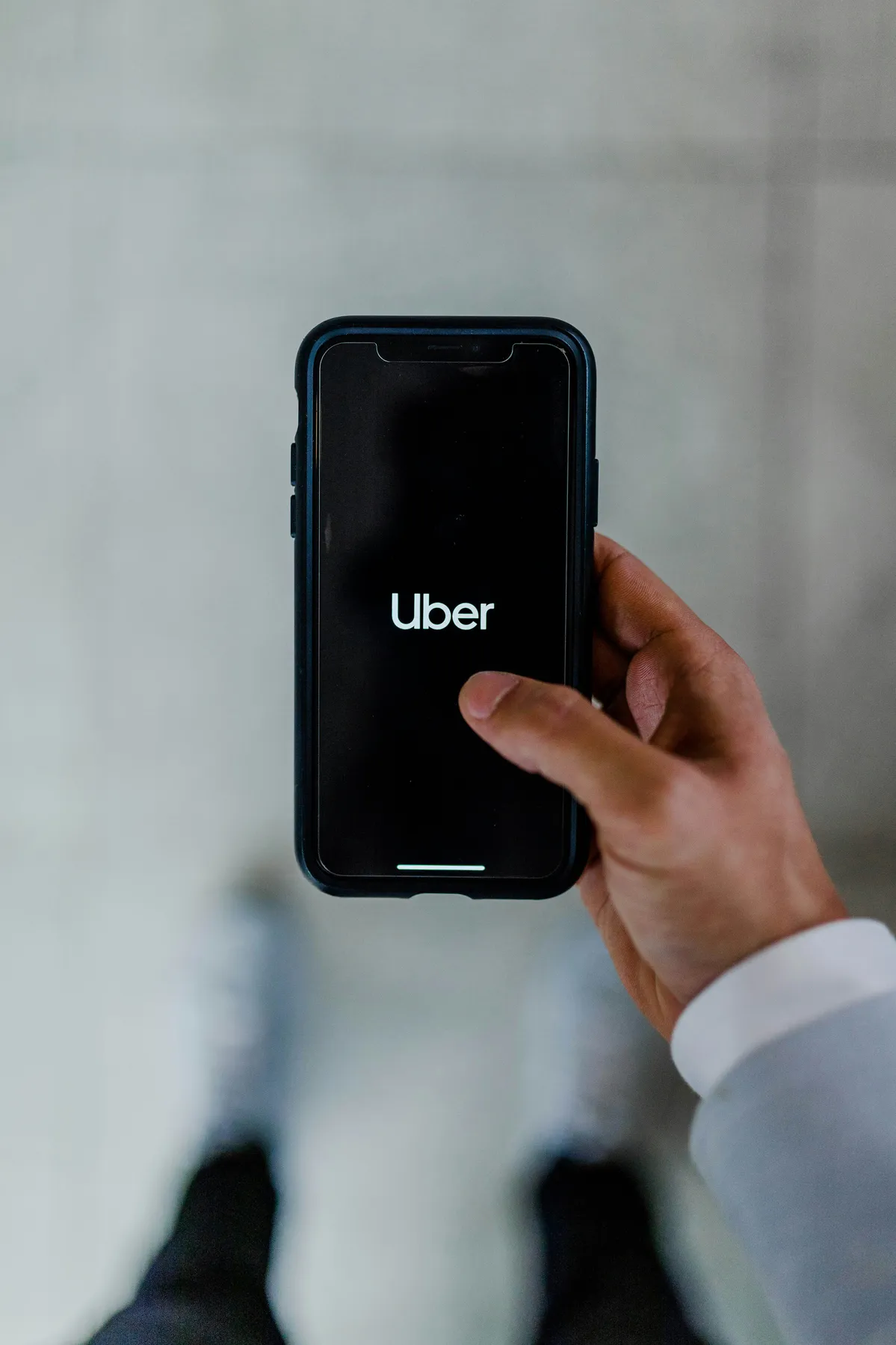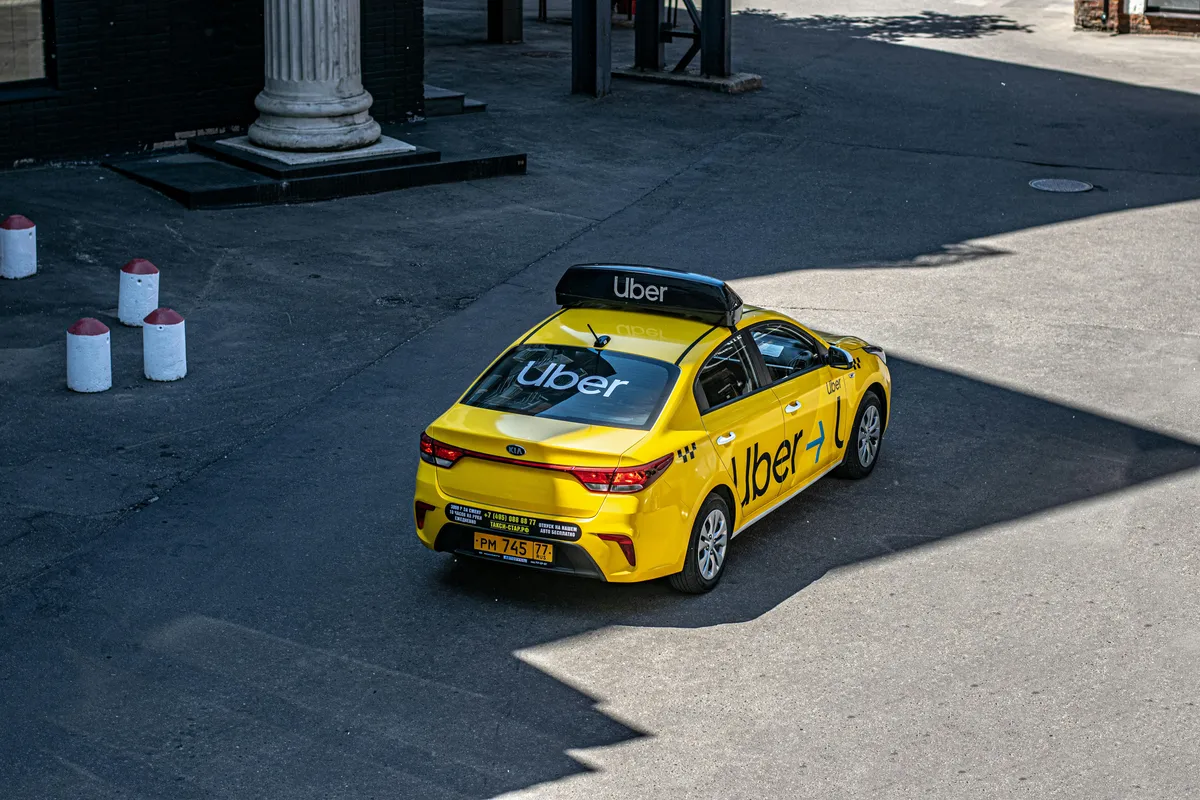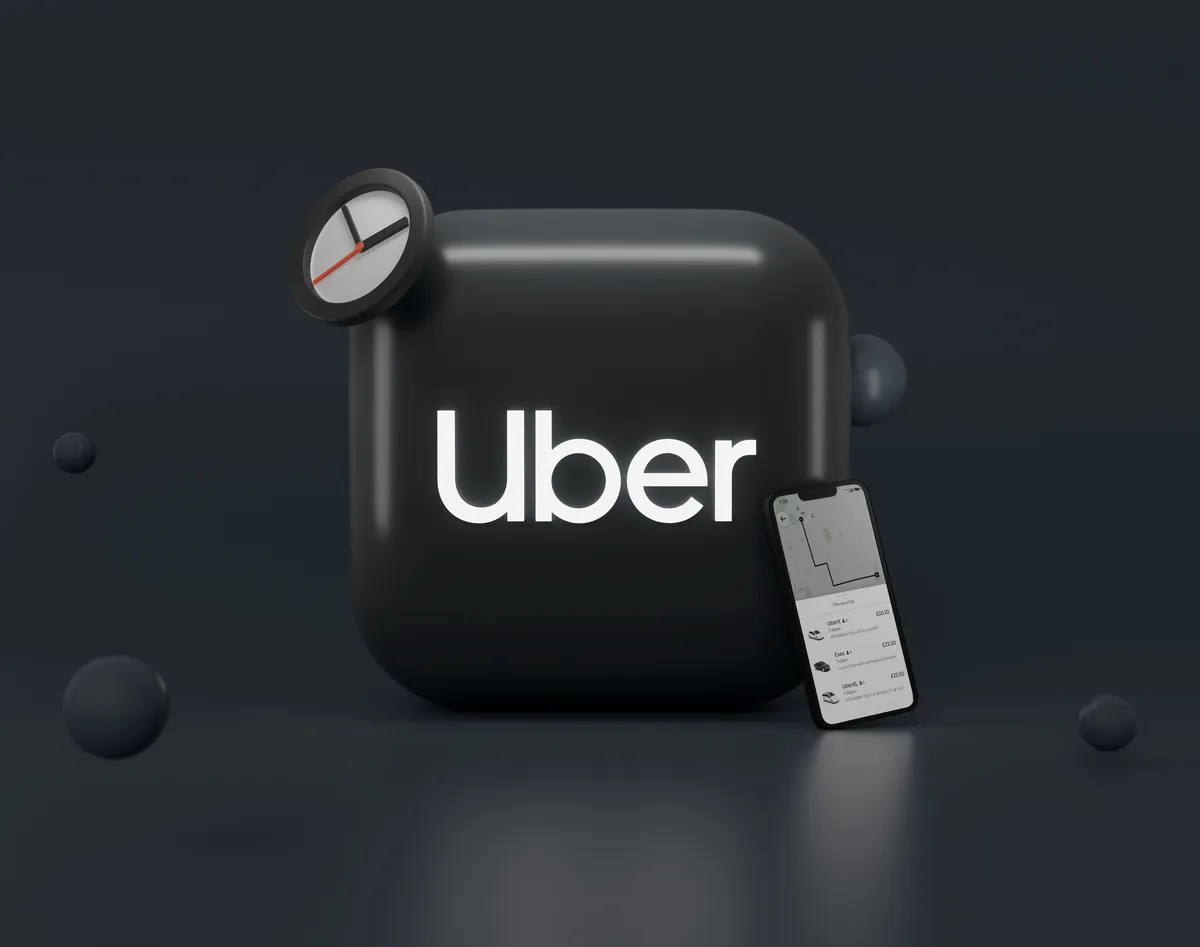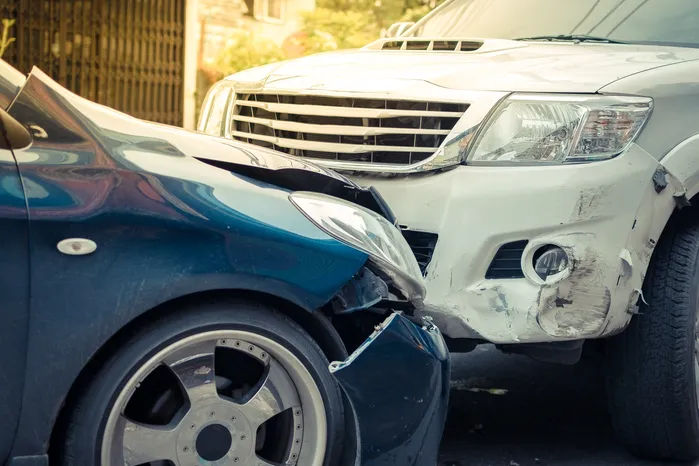10 min read time
Table of Contents

Average Uber Settlement Amounts
Uber accident settlements are divided into economic and non-economic damages, and factors such as the severity of suffered personal injuries, liability, and insurance limits often affect the final payout.
Understanding the average Uber accident settlement amounts and the factors that influence them is crucial for anyone involved in an Uber crash who is seeking a fair settlement.
Average Uber Passenger Settlement Ranges
When an Uber passenger files a claim, the payout is backed by medical costs, pain and suffering, and personal injuries.
Minor injuries such as whiplash or a broken wrist usually result in settlements between $10,000 and $25,000 for the medical expenses and pain and suffering.
While moderate injuries, such as broken bones or concussions that have longer recovery times, can push the settlement figure toward $25,000 to $50,000, due to ongoing medical treatment and potential lost work days.
Many factors shape the final settlement amount for an Uber passenger, including the severity of the injury, personal injury laws, and any additional rider protection purchased, but the main affecting factor is the severity of the injury, with settlement ranges based on injury severity being:
- $10,000-$25,000: Minor injuries such as light whiplash that require short-term care.
- $25,000-$50,000: More moderate fractures and injuries that require extended therapy and other ongoing medical treatment.
- $50,000-$200,000: Serious injuries that affect future earning power and living ability. Common injuries that warrant such a settlement include traumatic brain injuries, spinal cord injuries, and permanent disability.
Average Uber Driver Settlement Ranges
When an Uber driver is involved in an Uber accident, the third-party liability coverage determines the settlement payout. For a simple fender bender, the repair costs are typically covered up to $25,000.
If a passenger is injured, the coverage can pay up to $50,000 per person or $100,000 for the entire motor vehicle accident.
However, in a severe crash that results in major injuries, extensive damage, or significant medical expenses, the liability coverage can rise to $1,000,000.
As an Uber driver involved in an auto accident, seeking legal counsel from an experienced car accident attorney from the Rodney Okano Car Accident Lawyer Law Firm is crucial, as our injury attorneys will pursue legal action on your behalf by handling settlement negotiations, building your case, and representing you in court.
Schedule a free consultation with one of our attorneys today by calling (702) 566-3600 and learn about your potential settlement.
Common Factors That Affect Uber Settlement Amounts

When trying to estimate your Uber accident settlement, it's important to understand key elements that affect settlement amounts, from injury severity to insurance limits and legal representation. Understanding these factors helps set realistic expectations and guide the path toward fair compensation.
Injury Severity
Severe injuries, such as bone fractures or traumatic brain injury, can increase Uber accident settlement amounts above $250,000, whereas minor injuries, such as whiplash, typically settle under $25,000.
Also, when a victim suffers from traumatic stress disorder or any other emotional trauma as a result of the car accident, the payout can increase to reflect those impacts as well.
Medical Expenses
Medical bills are a major component of Uber accident settlements. High costs for surgery, therapy, and ongoing care, including hospital bills, can increase a claim's payout.
Keeping receipts and including medical records and bills ensures the insurance company will cover all past, current, and future expenses.
Additionally, medical professionals' notes, documented treatments, and expert opinions are crucial for proving the extent of the injury.
Lost Wages and Loss of Future Earnings
Lost wages from missed work days can increase an Uber settlement amount, especially if you show actual income loss during recovery.
Future earnings loss reflects a long-term disability that reduces career prospects and potential salary growth; such an impact on the plaintiff's earning capacity can greatly increase a settlement, especially if the plaintiff's job paid well.
Pain and Suffering Calculations
Pain and suffering damages reflect the physical and emotional toll of an Uber accident. They are often calculated using a multiplier applied to total economic losses.
Expert testimony, medical records, and documented daily pain can help your attorney in getting higher settlement offers from the insurance companies.
Property Damage Costs
Property damage is calculated by repair estimates and replacement costs of the personal property that was damaged or destroyed in the Uber accident.
Accurate documentation of damaged items from a repair shop can strengthen the claim.
Higher damage assessments stemming from extensive vehicle damage can raise the overall settlement average.
Liabilty
Determining who was at fault for the Uber accident depends on evidence such as police reports, witness statements, and vehicle data.
The percentage of fault assigned to each party involved directly influences the multiplier used in settlement calculations.
Gathering evidence, recording statements, and proving liability are essential steps in establishing who is at fault and avoiding liability from being pinned on you.
Insurance Coverage Levels
Whether a personal insurance policy or Uber's coverage tiers are in play directly influences average settlement figure amounts.
When coverage is limited, settlement payouts can become capped, keeping the average settlement range low. In contrast, a full commercial insurance coverage can push settlement figures higher.
Legal Representation Quality
Seeking strong and experienced legal representation from the top Uber accident attorneys from the Rodney Okano Car Accident Lawyer Law Firm can uncover hidden damages, negotiate wins, and push the insurance company into offering fair compensation.
Our law firms' experienced attorneys understand policy limits, precedent, and procedural nuances that can lift a settlement beyond the typical range.
Contact our firm today at (702) 566-3600 and allow us to build you a fair settlement strategy that secures you a favorable outcome.
Uber's Insurance Framework Explained

Whether or not Uber's coverage activates depends on the different states a driver can be in, from offline to passenger onboard.
Understanding how Uber's insurance coverage works and how it interacts with a personal insurance policy is crucial for anyone injured in an Uber accident.
Uber's Coverage When the Driver Is Offline
When a driver is offline, Uber's insurance does not apply, leaving the driver's personal insurance policy as the sole source of protection form any claim.
If that policy is insufficient, the passenger may still pursue a claim against Uber's general liability policy, but only if the driver was engaged in a commercial activity.
Typical insurance limits for an offline driver's coverage are:
- Bodily injury per person $50,000
- Bodily injury per accident $100,000
- Property damage per accident $25,000
The vast majority of claims can be resolved with a personal policy; however, if medical expenses exceed limits, the passenger should seek legal assistance for their Uber accident case.
Uber's Coverage When the Driver Is Waiting for a Ride
When an Uber driver logs on to the app and is put into a waiting state, Uber's contingent liability insurance activates.
It offers at least $50,000 bodily injury per person, $100,000 per accident, and $25,000 for property damage, and steps in if the driver's personal coverage can not cover the damages and injuries sustained by the other drivers.
This protection from Uber is only in play while the Uber driver is logged in and awaiting a ride request. Once the driver logs off, they'll only have their personal coverage to protect them, and passenger insurers may still view the activity as commercial, potentially creating a coverage gap.
Uber's Coverage While the Driver Is Accepting or Is Currently Doing a Ride
When an Uber driver accepts a ride request and is either en route to pick up a passenger or actively transporting one (i.e., carrying passengers), Uber's commercial policy is in effect.
This tier offers at least $1 million in third-party liability insurance, which can easily cover the injuries and damages you may have sustained in the Uber accident.
Additionally, Uber's Uninsured/Underinsured Motorist (UM/UIM) coverage provides protection for passengers when the other driver lacks sufficient insurance coverage.
The policy also includes contingent comprehensive and collision protection for the driver's vehicle, subject to a $2,500 deductible, ensuring that damage to the car is covered.
Steps to Filing a Claim After an Uber Accident
When an Uber accident occurs, the first step is to understand the insurance coverage that applies. Knowing whether the driver was online, offline, or in transit determines which policy will be invoked. This knowledge can change how you approach the claim process within the complex legal landscape.
#1 Immediate Reporting Steps
Report the incident to Uber right away by opening the app, navigating to "Help," and selecting "Report a Safety Issue." Provide the date, time, location, and a brief description of what happened.
Then seek medical attention immediately after the Uber accident and contact your insurance company as soon as possible.
Keep a record of the claim number and the name of the representative you speak with. Prompt reporting helps preserve evidence and speeds up the claims process.
#2 Gather Evidence
Gather vital pieces of evidence, including medical records and hospital bills, to prove the extent of injuries sustained. Keep copies of all hospital or clinic paperwork, therapy logs, and diagnostic imaging results.
Obtain the police report and any official accident documentation Uber provides, detailing the vehicles involved. Request a copy of the Uber accident claim form and the insurer's policy limits.
At the accident scene, collect witness statements, photographs of the scene, vehicle damage, and any visible injuries. Obtain the Uber driver's name, license plate number, and insurance details, and preserve any communications with Uber or its insurance company.
#3 Establishing Comparative Fault
Comparative fault is a system used to assign fault to each party involved in the Uber crash, including the driver, passenger, and other motorists.
Evidence like GPS logs and witness statements helps determine each party's fault percentage. Courts and insurance companies awarded damages based on the fault percentages.
If the driver is 70% at fault and the passenger 30%, the passenger's recovery is reduced by 30%, while the driver is most likely barred from recovering compensation. Under a comparative fault system, it's crucial to minimize your fault percentage if you seek to maximize your settlement.
#4 Negotiate with the Insurance Company
When you file a claim after an Uber accident, the first step in negotiation is to build a solid demand package.
Include medical bills, lost wages, and expert reports that quantify future care costs. Ensure you present clear, data-driven figures that help the insurance adjuster understand the full scope of damages and reduce the temptation to offer lowball settlements.
If the insurance adjuster fails to offer you a fair settlement, contacting an attorney is highly recommended, as they can bring litigation into play and use the threat of court action to prompt a fair offer.
How to Maximize Your Settlement After an Uber Accident
When seeking a fair settlement, understanding how to navigate settlement negotiations can significantly improve your final settlement offer.
By carefully assessing evidence, timelines, and obtaining legal advice, you can position yourself for a larger settlement.
Assessing the Initial Offer
When you receive the first settlement proposal from the insurance company or Uber, compare it to the documented medical expenses, lost wages, and any future expenses that may arise.
If the settlement offer does not cover all of your damages, discuss a revised demand with your attorney and consider gathering additional evidence to support a higher settlement or taking your claim to court.
Consider Taking the Litigation Path
When negotiations stall, filing a lawsuit can shift the balance in favor of the plaintiff. A well-structured complaint that clearly outlines economic losses, pain and suffering, injuries resulting, and long-term effects signals to the insurance company that the case is serious and that there is a chance it could go to court.
A competent litigation legal team, such as the one at the Rodney Okano Car Accident Lawyer Law Firm, will leverage discovery tools, obtain internal Uber communications, and present expert testimony to strengthen your claim.
The threat of a trial often prompts insurance companies to revisit settlement offers, improving the final settlement offer for your Uber accident case.
Practical Settlement Calculation Methods
When determining fair compensation for an Uber accident or another auto accident, several calculation approaches can be employed. Understanding the basics of each approach provides a solid foundation for negotiating or litigating claims in an Uber collision case.
The Per Diem Formula
The per diem method assigns a daily rate that reflects the claimant's daily lossess, regardless the claimant is an Uber passenger or Uber driver.
The rate is usually a percentage of the claimant's daily wage or a flat amount set by the court. It is then multiplied by the number of days the victim experiences pain or requires treatment.
Because the calculation depends on a fixed daily figure, it works best for injuries that produce a steady level of discomfort. However, for chronic or progressive injuries, the per diem period may be capped or adjusted, and attorneys often have to supplement the claim with a future-cost analysis.
The Multiplier Approach
The multiplier approach starts with totaling all the economic damages, including hospital bills, lost wages, repair costs, and out-of-pocket expenses.
Then, a multiplier between 1.5 and 5 is applied to estimate pain and suffering. The exact multiplier amount depends on injury severity, permanence, and impact on daily life.
For example, a moderate injury might use 2.0, while a catastrophic brain injury could justify 4.5. This method is favored by many insurance companies because it provides a clear, repeatable formula that ties non-economic loss to quantifiable costs.
Obtain the Compensation You're Entitled To
Contact Us Today
Rodney Okano Car Accident Lawyer is a Las Vegas personal injury law firm with over 20 years of experience helping clients obtain maximum compensation following injuries from accidents such as car crashes, worksite injuries, and slips and falls. Over those years, The Rodney Okano Car Accident Lawyer Law Firm has become an experienced law firm that can ensure exceptional results for any of its clients.





